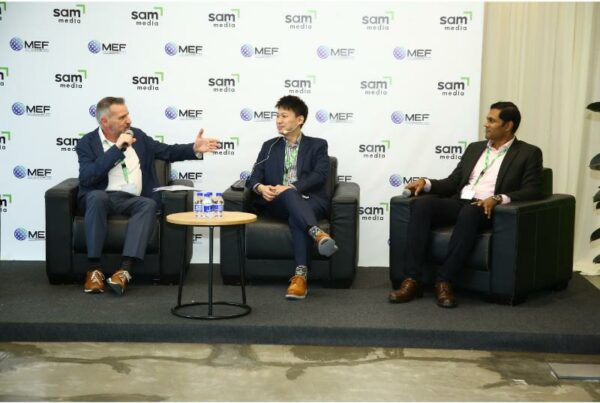In growth economies, where handset penetration is high, mobile is typically the first and sometimes only digital touch-point for consumers within a large under-banked or un-banked population. Characteristically commerce in the these countries is predominantly cash based, where routine financial tasks like transferring money to friends, paying utility bills or topping up phone credit is a matter (for most at least) of paying with hard cash.
However in recent years that situation has begun to change. Banks, credit card companies, mobile carriers and regulators are increasingly working together to create ecosystems that exploit the ubiquity and convenience of mobile to deliver mobile money services, streamlining the transaction process and allowing consumers, often for the first time, access to an array of financial services. Below MEF Member, MasterCard has provided a case study on how the company has made mobile money a reality in Egypt.
Background
With a population close to 80 million, Egypt has around 16 million households. The average household has to deal with around 13 different utility and service providers each with their own requirement around the periodic settlement of bills. The degree of hassle associated with managing these household accounts is significant. One estimate suggests that there are more than one billion utility and service bills issued and paid in Egypt annually with a total value exceeding 60 billion Egyptian Pounds ($8.4bn).
Traditionally Egyptians pay their bills via cash by visiting the biller branch, via phone collection for some of the utilities, or through an appointed biller aggregator agent. Electronic bill payment is available via ATMs, the internet, and point-of-sale, again through an appointed biller aggregator. As for money transfers, some Egyptians have the option of making a bank transfers, for others there are formal facilities like the Egyptian Post Office or informal money transfer agents like bus drivers who are entrusted to courier cash across cities.
Interoperability at the core of the proposition
In 2013, MasterCard and the Egyptian Banks Company for Technological Advancement (EBC) launched a joint program to bring a national mobile money service to Egyptian consumers. The objective, backed by the Central Bank of Egypt and the Egyptian Government, was to bring financial services to the fingertips of each and every Egyptian, whilst simultaneously ensuring that all mobile money providers in the ecosystem have interoperable services so that multiple mobile payment options are provided to every Egyptian consumer.
The first program launched in July 2013 in collaboration with the National Bank of Egypt (NBE) and Middle East mobile operator, Etisalat under the Flous brand.
The second program was launched in September 2013 with NBE and banking and payment technology service provider, Fawry under the PhoneCash brand.
The service enables different Egyptian mobile money operators (banks, mobile network operators, and service aggregators) to allow their subscribers to transfer money to anyone participating in the service using their mobile phones, to load cash on their phones or take out cash through participating banks, mobile network operators, and service aggregator branches across Egypt. The program also allows subscribers to pay their bills through their mobile phones and top up their mobile prepaid lines.
As the end-user interface, the program partners have the option to use feature or smartphone apps and USSD applications which connect seamlessly to MasterCard’s secure Mobile Payment Gateway and Core Network as the interoperability platform and EBC’s account management system.
The regulatory environment
The Central Bank of Egypt (CBE) and the Ministry of Finance played a role in regulating the services as both entities jointly own 54% of Egyptian Banks Company (EBC). The CBE has directed EBC to assume the responsibilities of the national inter-bank payment systems in Egypt by implementing and operating the following:
- The Debit Card Scheme and Shared Cash Networks (123)
- The Automated Clearing House (EG-ACH)
- The Mobile Payment Network
The National Telecommunications Regulatory Authority (NTRA) was also involved in regulating the participation of Etisalat as a mobile network operator.
The main regulatory issue that needed to be resolved was the requirement for users to appear in person at the bank or service provider’s premises to sign a mobile account agreement or application. This prevented consumers from immediately using the service since they had to schedule branch visits instead of online or phone applications.
The regulatory and licensing requirements were quite clear. It took over 12 months of contractual negotiations, 8 months of integration and testing, and six months of change requests and preparations for go-to-market before the first launch in June 2013.
The fact that the whole interoperable mobile money effort was spearheaded by the government helped lend much needed credibility to the service.
How has the service been received?
Since the mobile money service is a relatively new proposition the main barrier to consumer adoption has been awareness. A combination of dedicated direct sales agents and branch personnel are used as sales channels to market the service to consumers alongside regular above the line and below the line marketing channels and social media which clearly communicate the presence and benefits of the service.
To date the service has been really successful with a high consumer engagement, yielding a blended average of over 1.5 financial transactions per month per active subscriber across the two programs. In terms of consumer activation, the two programs have grown to have a blended average of over 37 per cent within 12 months of launching the first program.
What’s next?
This November the service has been expanded to allow subscribers to pay for goods and services at merchant locations in addition to using the service for e-commerce payments globally via a Virtual Card Number scheme.




